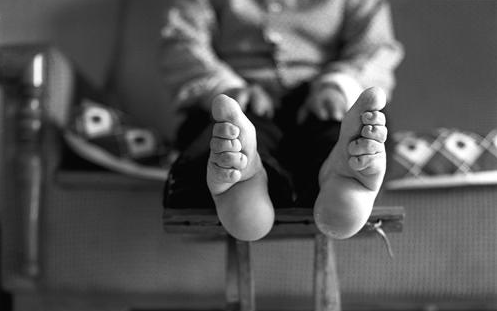The tradition of foot binding is one that is deeply rooted in Chinese culture. The popularity of this practice continued for nearly 10 centuries and it was not until the early 1900’s that foot binding was officially banned.
As you can imagine, the process of foot binding was quite a painful one. Extremely tight binding was applied to the feet of young girls to prevent the feet from growing. To ensure that the foot stayed small, toes were curled inward and pressed with a great force until the toes were broken. As you can expect, infection and lifelong disabilities were extremely common.
Foot binding was a very obvious way of showing status. The idea was that women from wealthy families could afford the luxury of having their feet bound while women from impoverished families could not participate in the practice because it would restrict their mobility to work. Bound feet became a mark of beauty and many women who did not have their feet bound would not be able to find a husband.
The very few remaining women who had their feet bound are now in their 80s and 90s. British photographer Jo Farrell decided to document and celebrate the lives of these women. She has been photographing and interviewing women since 2006 and is currently raising funds to compile her research into a book, Living History: Bound Feet Women of China. Fastcodesign.com‘s Carey Dunne managed to speak to the photographer:
Though the foot-binding process was excruciating, Farrell says the women she spoke to didn’t express anger over their past. “The women know that having bound feet was a part of normal life at the time. It was what was required of them to find a suitable marriage,” she says. Often, women and their husbands took great pride in their tiny feet–the ideal length for a bound foot was three inches. In many cases, foot-binding led to permanent disabilities, but in the cases of the women Farrell photographed, most of whom are in their 80s and 90s, “they get around on their own just fine. Most of their ailments are to do with old age,” Farrell says. If anything, “they feel somewhat ashamed of their feet, as it is a bygone tradition and does not represent modern ways in China. They are a generation of forgotten women.”
Farrell acknowledges that her photographs are shocking and, at times, difficult to look at. However, she points out that we currently have a number of body modification practices which may seem just as bizarre to an outsider’s eye. We have plastic surgery, tattoos, FGM, etc.
“Perhaps her documentation of the painful remains of one culture’s insane beauty standards will help shed light on our own.” Dunne remarks.
[wp_ad_camp_1]













